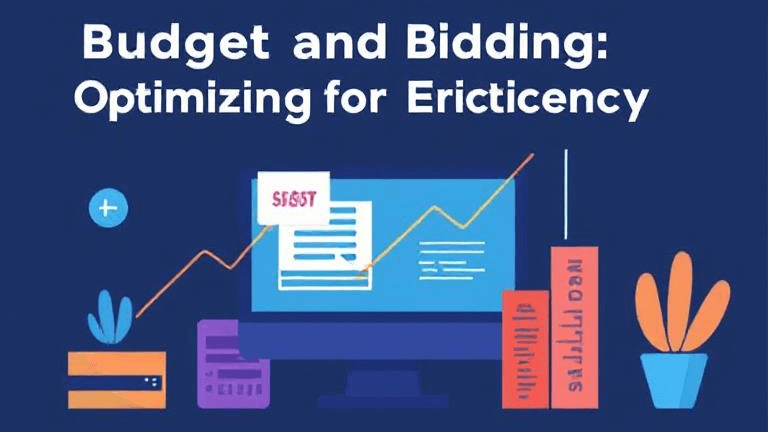Table of Contents
Every digital advertiser should view When you are navigating through the digital advertising matrix, your Google Ads are one of the most valuable assets. However, in case of neglecting the importance of an organized and comprehensive examination, that investment turns into a costly affair very swiftly. Managing {check google ads} is not only a matter of checking it; it is a matter of necessity. This piece will provide you with a step by step guide on seven tests that will assist you to stop bleeding ad spend in Google Ads and gain mastery of it.
Introduction: The Imperative of Vigilance in Google Ads
Google Ads operates through a continuous set of dynamic changes at both the technical and user behavioral and market trend levels. Google ads monitoring requires more than dashboard observation since it allows you to detect issues which ensures your optimization leads to highest return on investment. The prevention of unproductive ad expenses depends on active monitoring which enables your advertising efforts to reach intended results.

1. Performance Metrics: A Deep Dive into Your Data
Checking your Google Ads performance requires an in-depth analysis of all key metrics at the beginning of your routine.
Key Principles :
- Your ad performance depends on the Click-Through Rate (CTR) so evaluate this parameter to understand how well your paid ads attract viewer attention. A decreased CTR points to problems with your advertisement content and audience selection and keyword choices.
- Your conversion rate should be evaluated to measure how your advertising efforts convert users into desired actions. The examination of low conversion rates indicates possible problems with your landing pages or targeting mechanism or your displayed offers.
- CPC measurement allows you to verify that you pay appropriate costs per click. The combination of high CPC and weak keywords shows your bidding landscape is intense or your Quality Score demands improvement.
- Review your impression share data to understand how your ads compete with those of your competitors throughout the search results. Your ads show fewer times when your budget stays limited or your position falls too far below others.
- To determine the profitability of your ad campaigns use the Return on Ad Spend (ROAS) calculation method. A low ROAS signals that your spending surpasses the money earned from the campaign.
- The data collected in google ads case studies demonstrates which metrics need closest monitoring.
Expanded Explanation:
Examine detailed data analysis starting from campaign groups then moving forward to keyword levels. Identify trends, patterns, and anomalies. You should segment your data to identify performance metrics across various demographic groups together with device categories and geographic locations. Detailed examination of data points will generate key information for future optimization decisions.
Always analyze present-day information against historical information. Whiteboard analysis of data allows you to identify patterns that develop with time.
2. Keyword Analysis: Refining Your Targeting
Keywords serve as the vital elements that build up Google Ads campaign structures. Systematic keyword investigations serve two important functions by keeping campaigns relevant to audiences while broadening their audience reach.
Key Principles :
- The search term report analysis should reveal which actual search phrases turn on ads. Review of search terms allows the detection of keywords which should be added to your exclusion list.
- You should examine your keywords through Performance Analysis while evaluating metrics that combine CTR with conversion rate and CPC measurements. You should direct investment toward your strong-performing keywords.
- You should investigate specific keywords which have lower competition levels. Searching with these keywords helps you attract better lead groups that will boost your conversion stats.
- The negative keyword list needs frequent updates to prevent advertising for non-matching search terms.
- Knowledge of the elements which determine {ad rank in google ads} becomes vital during the keyword evaluation process. High-quality key terms promote better position in advertising hierarchies.
Expanded Explanation:
Keyword analysis exists as a continuous practice. The way users search online keeps evolving thus you require continuous updates to your keyword strategy. Tools for keyword research help you find new business prospects to rise above market competition.
Negative keywords allow you to optimize Google Ads expenditures by preventing needless spending.

3. Ad Copy and Creative: Ensuring Relevance and Engagement
Your advertisement begins with both copywriting and creative content when trying to reach potential customers. The content has to maintain both interest and validity in addition to being emotionally appealing.
Key Principles :
- Make sure your advertisement content directly connects to the search terms while matching your destination pages. Dynamic keyword insertion serves as a method to make your advertisements more personalized.
- Attract viewers with appealing headlines which showcase your key beneficial features.
- The message should feature a straightforward call-to-action directive which explains what customers need to accomplish.
- Regular testing of different ads with A/B method helps you find which combinations deliver the best results.
- The {ads banner design} functions as the central element of creative development. Use superior quality banners which match the current conditions.
- Every aspect of the {google ads banner design} should work well for all screen sizes.
Explanation:
The written message in your advertisement must stay direct while using persuasive dialog to persuade users toward taking action. Emphasize product and service advantages before building a time-sensitive environment for your audience to make decisions. Choose emotional triggers which help your audience establish deeper connections.
Visual advertisements must be prioritized at all times. The visual ads must be branded with high-quality production standards.
4. Landing Page Experience: Optimizing for Conversions
Customers must experience superior landing page optimization for successful conversions. The successful elements for landing pages include relevance together with user-friendly design and conversion optimization.
Key Principles :
- Your landing pages must demonstrate direct connection to the keywords along with matching content in your advertisement.
- Page Speed: Optimize your landing pages for fast loading times. Page loading times above 3 seconds result in users returning to the previous site quickly.
- The pages must be optimized for mobile screens because you must deliver consistent user experiences across all devices.
- Clear Call-to-Action: Include a clear and prominent call-to-action on your landing pages.
- User Experience (UX): Create a user-friendly layout with clear navigation and intuitive design.
- Google ads ad rank rankings are improved by having both strong landing pages alongside proper understanding of influencing factors.
Explanation:
The desired action management starts on your landing pages because you should guide users toward either making a purchase or filling out forms or subscribing to newsletters. Your messages should persuade customers through copy while graphics and social proof establish trustworthiness.
Constantly check the data that appears on landing pages. Time on page combined with bounce rate gives substantial weight to your metric analysis.

5. The process of delivering messages to appropriate recipients is known as targeting and audience.
Your Google Ads campaigns require proper targeting as a fundamental element to increase exposure to and importance for your audience.
Key Principles :
- You should adopt Demographic Targeting which lets you focus on reaching particular groups based on their age group and gender and geolocation characteristics.
- Companies can reach consumers by choosing whom to target based on recorded interests in addition to their online activities.
- You should use remarketing strategies to reconnect with website and ad interacted users.
- Examine your audience insights so you gain comprehension regarding the behavioral characteristics of your target market.
- A review of {google ads case study} examples helps discover the approaches which led to successful targeting approaches.
Expanded Explanation :
Targeting requires ongoing attention because it cannot function independently. You must review your targeting strategies frequently because user behavior together with market trends continuously change. Arm yourself with insight about your audience to detect fresh prospects while you improve your method for success.
Bidding strategy modifications should take precedence for the age group that shows the highest conversion rate.
Use location targeting strictly in your campaigns. Your ad spend will decrease through targeted promotions because you are displaying them only to the audience within your designated market area.
6. Budget and Bidding: Optimizing for Efficiency
Your budget decisions along with your bidding approaches directly shape how Google Ads campaigns spread their reach and operate efficiently.
Key Principles :
- You should distribute your budget sensibly between your advertising campaigns and ad groups. Your advertising budget should go first to successful advertising initiatives and then you should change amounts based on which campaigns perform best.
- Strategic choices of bidding strategies become necessary to achieve your campaign objectives. Your Google Ads performance can reach peak conversion efficiency through making use of target CPA or target ROAS automated bidding algorithms.
- The strategic utilization of bid adjustments lets you set priorities for particular demographics combined with devices and locations.
- Regular evaluation of your costs must be performed to verify your budget stability as well as your ROI goals achievement.
- Knowledge of all the variables that affect {ad rank in google ads} must be part of the bidding strategy creation process.
Expanded Explanation:
The marketing budget needs to match both your sales objectives and the main business goals of your company. You should routinely evaluate your budget spending to confirm it leads to maximum ROI.
Bidding strategies are not one-size-fits-all. Design multiple bidding approaches to detect which ones deliver optimal results in your advertising projects.

Establish a budget between moderate and excessive levels. Achieving the proper equilibrium stands as the essential factor.
7. The assessment of your marketing influence depends on your ability to track and attribute results.
Your Google Ads campaigns require precise tracking systems that enable you to determine their overall impact.
Key Principles :
- Organize your campaigns through conversion tracking processes that will help you measure their effectiveness.
- The implementation of attribution modeling allows you to track customer interactions from start to end and distribute footprint value between advertising channels.
- You should integrate Google Analytics with Google Ads because this connection brings deeper understanding about user actions.
- Analyze your data patterns on a regular basis to find strategic improvements for better performance.
- Conversion tracking serves as the measure for both {ads banner design} and {google ads banner design}.
Explanation:
Tracking alongside attribution provides the means to follow your Google Ads campaigns as they affect business outcomes. By using data-driven methods you can make your campaigns reach their highest possible ROI results.
Analyze conversions by their monetary value rather than their basic counts. Understanding which conversions hold the most essential value becomes possible through this strategy.
Correct attribution modeling serves as a mandatory tool for comprehending how customers move through their journey.

Conclusion: Mastering Google Ads Through Diligent Checks
It is very important to understand that the management of {check google ads} is not something which is done ones, but rather entails a constant effort that should be made to ensure that any signs of non-compliance with the rules and regulations of the website are addressed effectively. With these seven features emphasized in this article, one can certainly halt the bleeding and maximize the ad spend, and, therefore, meet the marketing objectives efficiently.
However, it is good to understand that check google ads is an active management platform requiring constant care and attention. Immediately, be alert, assess your information and set the right tactics to counter the competition. To accomplish this dream, one has to learn the tactics of Google Ads check to maximize the results of the campaign for the good of your business.
Frequently Asked Questions
How to check competitor Google Ads?
Want to see what your competitors are up to? Google’s Ad Transparency Center or tools like SEMrush and SpyFu let you check their Google Ads strategy. Just enter their website URL, and you’ll get insights into their ads, keywords, and campaign performance.
How to check Quality Score in Google Ads?
Your Quality Score affects how much you pay per click. To check it, go to your Google Ads account, open the “Keywords” tab, and look for the “Quality Score” column. If you don’t see it, customize the columns and add it!
How to check if Google Ads is working?
Simple! Check your ad performance in Google Ads by looking at impressions, clicks, and conversions. You can also use the Ad Preview Tool to see if your ad is showing without affecting your stats.
How to check Google Ads in other countries?
Want to see Google Ads running in another country? Use the Google Ads Preview Tool, change the location settings, and search for relevant keywords. VPNs also help you simulate searches from different locations.
How to check Google Mobile Ads SDK version?
To check your Google Mobile Ads SDK version, look at the logs in your development environment or use the “Get Version String” method in your app’s code. This helps ensure you’re using the latest features and fixes!








